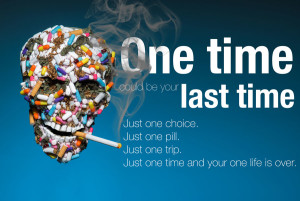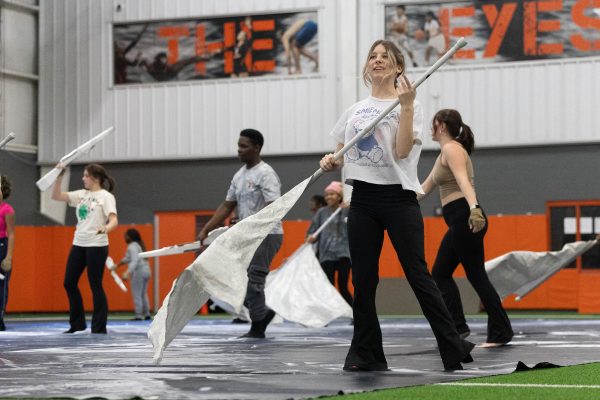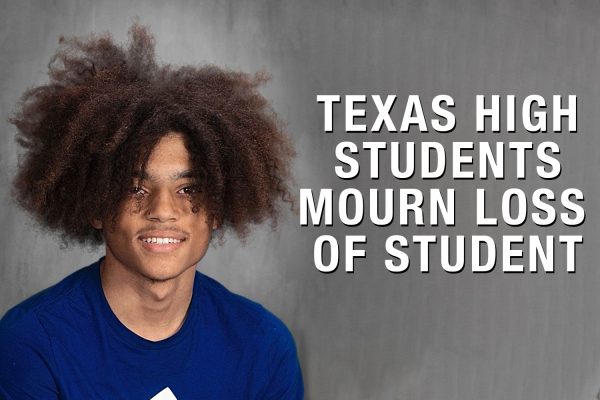One trip could be your last trip
Officials discuss reality of uneducated teen drug use
September 25, 2015
He’s seen this too many times before.
The empty pill containers.
The immobile, unresponsive teenage body.
He’s done this too many times before.
The chest compressions.
Another round of reversal medications.
He’s heard this too many times before.
The weeping cries of a mother.
The stony silence of a father.
Dr. Matt Young has been in emergency medicine for 19 years and has dealt with numerous cases of teenage overdoses.
“It’s a very disturbing scene for the caregivers,” Young said. “More importantly, it’s very disturbing for the loved ones of the patient because most of the time they heard that they were going out to a party or into another room, and the next thing they know, the patient has been put on a ventilator. When young people die, it’s just very tragic because the majority of the time, it could have been prevented.”
Many teens hope for a quick trip, something that will calm them down or relieve their stress. In a survey collected by drugfreeworld.org, 50 percent of the teenagers believed that prescription drugs are safer than street drugs and that 60-70 percent received the medication from their own homes.
“With prescription drugs, the reason that so many people take these and abuse these is because they can fit in a pocket and can be concealed,” Young said. “You can put that in your pocket and sneak that in and take those at the most convenient time for the person trying to get that artificial high.”
Texas and Arkansas now have a state Prescription Drug Monitoring Program (PDMP) which gives individuals who are authorized under state law to receive the information for purposes of their profession. According to deadiversion.usdoj.gov, the program can “identify or prevent drug abuse and diversion, facilitate and encourage the identification, intervention with and treatment of persons addicted to prescription drugs.”
“We don’t write a huge amount of prescriptions [in the emergency department,]” Young said. “We will prescribe them enough to get to the follow-up appointment. It’s important for all of us as physicians and physician extenders to take each patient and each individual complaint and make the decision of what’s the best pain medication for this patient. [We] see what other prescriptions have been prescribed and filled [with the database], so it gives us a little insight of abuse potential.”
The database may be a prevention technique to avoid more overdoses, but the eradication of drug abuse is still a long ways away. Until then, educating people on the dangers of their medication and illegal drugs is one of the top methods for awareness.
“I think it will help,” Young said. “Is it the cure for it? By no means. The cure for it is the knowledge of the person who is taking the medicine, and also for young adults to understand that these medicines can be deadly.”
Social media has evolved from getting to know distant relatives and catching up with long-lost friends to new ways to access drugs. A quick direct message on Twitter or Facebook now makes it possible for dealers to target younger clients.
“Social media has made a terrible turn,” TISD police officer Brad Irvin said. “It keeps things stirred up. People make things up. The drug part of it is transactions being made. People are getting connected with each other and, within the drug world, they’re being able to contact our teenagers. It definitely plays a negative effect in this nation.”
Turning on the radio, Tove Lo blares about bad habits and staying high, Lil Wayne and Future spit rhymes about their favorite purple drink on your Pandora or Spotify station and Miley Cyrus is a Happy Hippie on your Instagram feed. Life has become 24/7 drug promotions.
“Our society makes it seem that drugs are glamorous, that it’s OK to do it and that it doesn’t cause problems,” Irvin said. “It does. It causes major problems. I’ve seen it destroy families. It kills brain cells you more than likely won’t get back. That’s from the lesser drugs to the more in depth drugs.”
Prescription pills are not the only worries of many doctors. Marijuana has recently become legal in the states of Colorado, Washington, Alaska and Oregon. This legalization has catapulted its increase in popularity between the teenage and young adult population, but there are many side effects to users’ mental actions and reactions.
“For instance, if you are going to drive, you can have an altered mental status that may be what the people are describing as the high,” Young said. “However, this high also slows their reaction time. They may not see another car pull in front of them, so it makes them more prone to wrecks. It also decreases their inhibitions to where they may make better decisions if they’re not on the drug, but, once they do take the drug, they may not make wise decisions.”
A new form of marijuana has surfaced, known as synthetic marijuana. Synthetic is usually illegally sold over the Internet and is favored by many people because it does not show up on a drug test. Although it doesn’t show up on tests, it has many dangerous side effects: fast heart rate, heart palpitations, arrhythmias, seizures and even death.
“[The] up and coming [drug] is synthetic marijuana,” Young said. “They try to market this as something that looks cool, but it’s an illegal substance. It has nothing to do with synthetic marijuana other than that name. It’s basically a combination of leaves with chemicals poured on them. No one knows how they react to it until they try it. I hope people understand that one use can cause death.”
Synthetic marijuana is also known by its package name, K2, and usually sold as potpourri, incense and other things that are not for human consumption. With the need to impress friends, many teenagers only try drugs and synthetics to prove themselves.
“Usually people obtain [synthetic marijuana] over the Internet from friends and peer pressure, then smoke it thinking it’s the same kind of high as illegal marijuana,” Young said. “It’s very unfortunate that it’s usually peer pressure that leads people to this, thinking they’re going to obtain some kind of high. It can be deadly with just one try.”
Not only are there physical dangers to smoking synthetic, but there are also extreme risks to users’ frame of mind. These hazards can include hallucinations and extreme paranoia.
“From the psychiatric standpoint, it can also make [users] very belligerent and almost in a state of psychosis, which means that they have an altered mental state,” Young said. “They can feel like they have spiders crawling on them. With that said, it’s very dangerous. It’s not a substitute for anything.”
Every few months, students will see Charlie, TISD’s drug dog, making its rounds through campus. Most of the time, students or faculty place anonymous tips on the TISD Police Department’s website or simply tell officers. Punishment for possession of drugs while on campus is DAEP and will lead to an arrest by campus police.
“When people do tell us tips, their name is never brought up. We do not want any retaliation, nor will we tolerate that,” Irvin said. “We have zero tolerance [of drugs] here, as in if we find it, you will be arrested. The county district attorney offices have a zero tolerance as well. You will be prosecuted and do your time in jail or prison, depending on what the case may be. It depends on if you’ve been arrested before or on what type [of drug] for how much punishment you get.”
Keeping good company and avoiding situations that could lead to a dangerous life are some of the easiest ways to stay out of trouble.
“We do have [a drug issue] here,” Irvin said. “I don’t feel like we have a major problem, but I’m not going to hide it that we do have small problems with teenagers. It comes back to this: it matters who your friends are and who you run with. You know who’s using drugs and not. It’s best if you keep yourself away from them and away from those situations. You won’t be tempted to try or do them.”


















